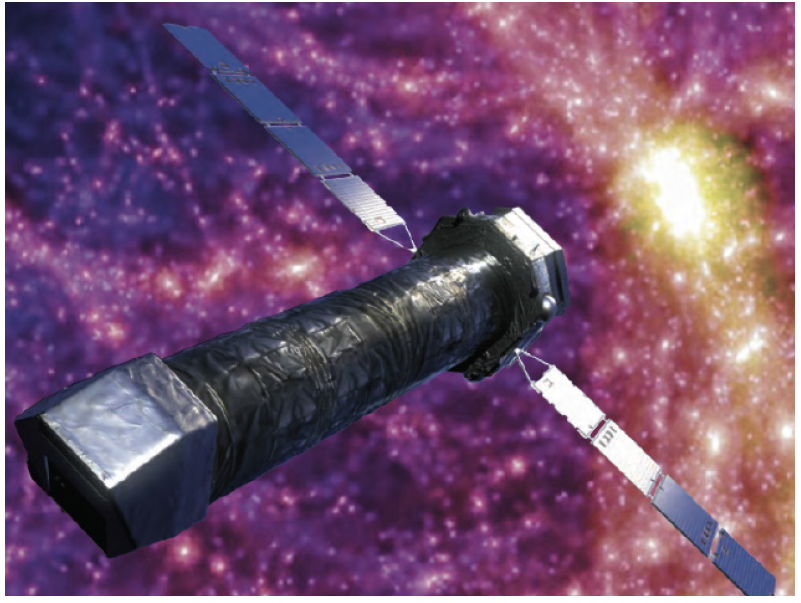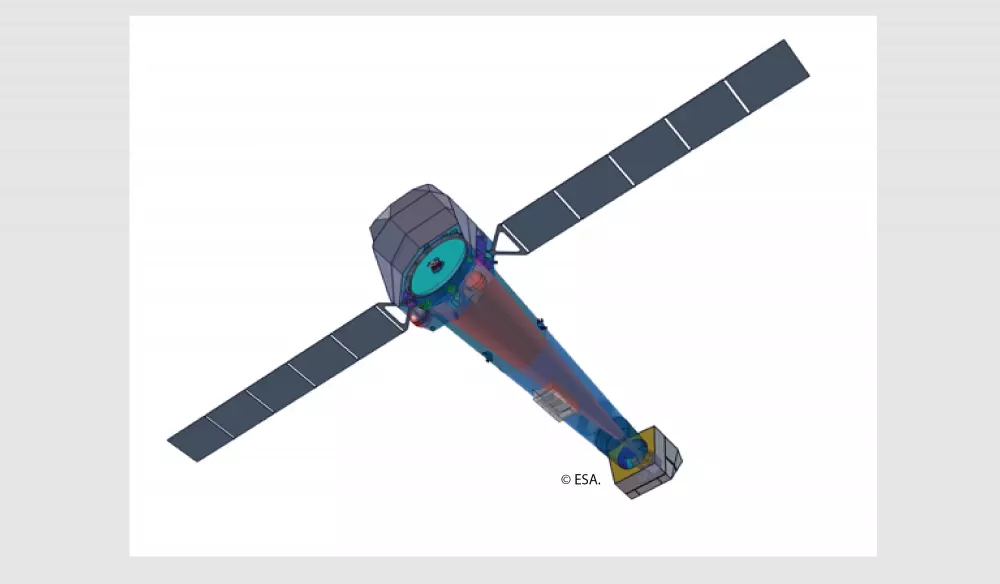
Artist image of the Athena (Advanced Telescope for High-Energy Astrophysics) X-ray telescope, now called NewAthena. Credit: ESA
Crédit : ESA
On November 8, 2023, ESA's Science Program Committee (SPC) approved the evolution of the Athena (Advanced Telescope for High-Energy Astrophysics) mission, now named NewAthena, and confirmed its status as the flagship mission of ESA's Cosmic Vision program.
Positioned as a pioneer in X-ray astrophysics for the coming decades, NewAthena will enable the astronomical community to make major scientific advances in our understanding of the hot, energetic universe. Key scientific themes include the evolution of the universe's structures, the growth and impact of supermassive black holes through cosmic time, and many other astrophysical fields for which the NewAthena X-ray observatory will provide unique data.
Formal adoption of NewAthena is scheduled for 2027, with a view to launch in 2037.
How Athena became NewAthena
The Athena (Advanced Telescope for High-Energy Astrophysics) mission was proposed in response to ESA's selection of "The Hot and Energetic Universe" as a priority scientific theme within its Cosmic Vision program. In order to keep ESA costs within an acceptable budget, several elements of the Athena mission had to be revised and consolidated to create the NewAthena mission. The main change concerns the design of the cooling chain for the X-IFU instrument, which achieves the same 50 mK performance. A Scientific Redefinition Team (SRDT), made up of 19 scientists, including a member of DAp-AIM/IRFU, was set up in 2022 by ESA to assess their potential scientific impact. Their conclusions, which were very positive, were presented to ESA's scientific advisory structure in October 2023, and the SPC approved the "flaship" status of the NewAthena mission and its development on November 8, 2023.
NewAthena, a telescope with revolutionary performance
NewAthena's performances are revolutionary in terms of sensitivity and spectral resolution compared with existing missions, opening up new, unexplored areas of high-energy astrophysical phenomena. The future European X-ray observatory NewAthena comprises three key elements:
- an X-ray telescope using innovative SPO (Silicon Pore Optics) technology offering large effective area and good spatial resolution (Half Energy Width <10 arcsec);
- a spectro-imager with high spectral resolution (~4 eV), the X-IFU (Integral Field Unit);
- a wide-field spectro-imager (40 arcmin) with moderate spectral resolution (<150 eV), the WFI (Wide Field Imager).
Irfu's role in the mission
IRFU plays a significant role in the development of the NewAthena mission by supplying the control electronics for the X-IFU's ADR (Adiabatic Demagnetization Refrigerator) cryostat, as well as the event processor for the detector's readout electronics. In addition, IRFU is making contributions aimed at maximizing the mission's scientific output.
Contact : Gabriel Pratt et Anne Decourchelle
• Structure and evolution of the Universe
• Department of Astrophysics (DAp) // UMR AIM
• Cosmology and Galaxy Evolution
• ATHENA





